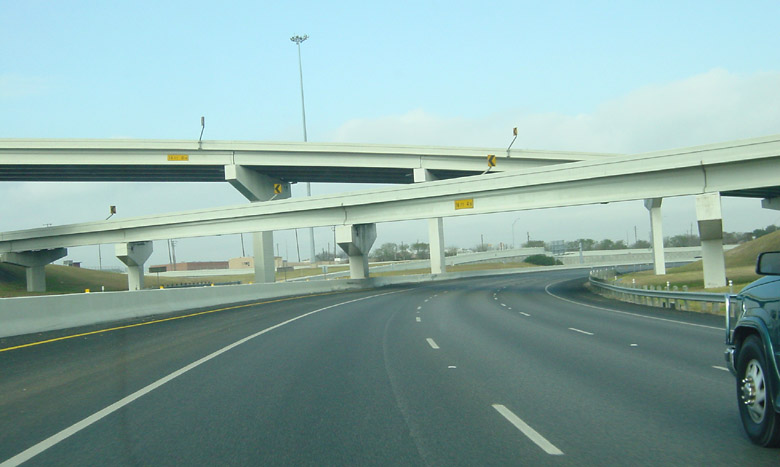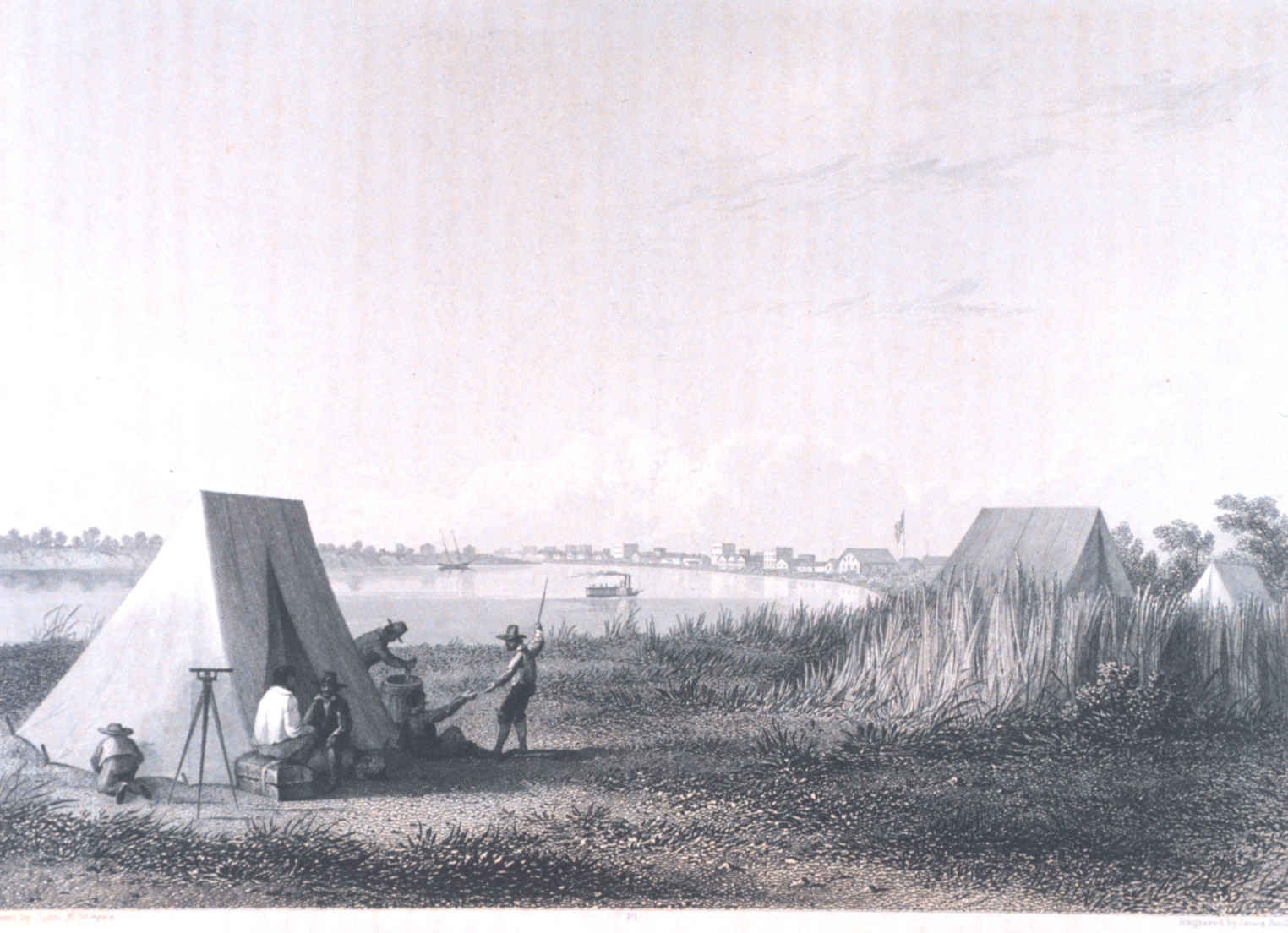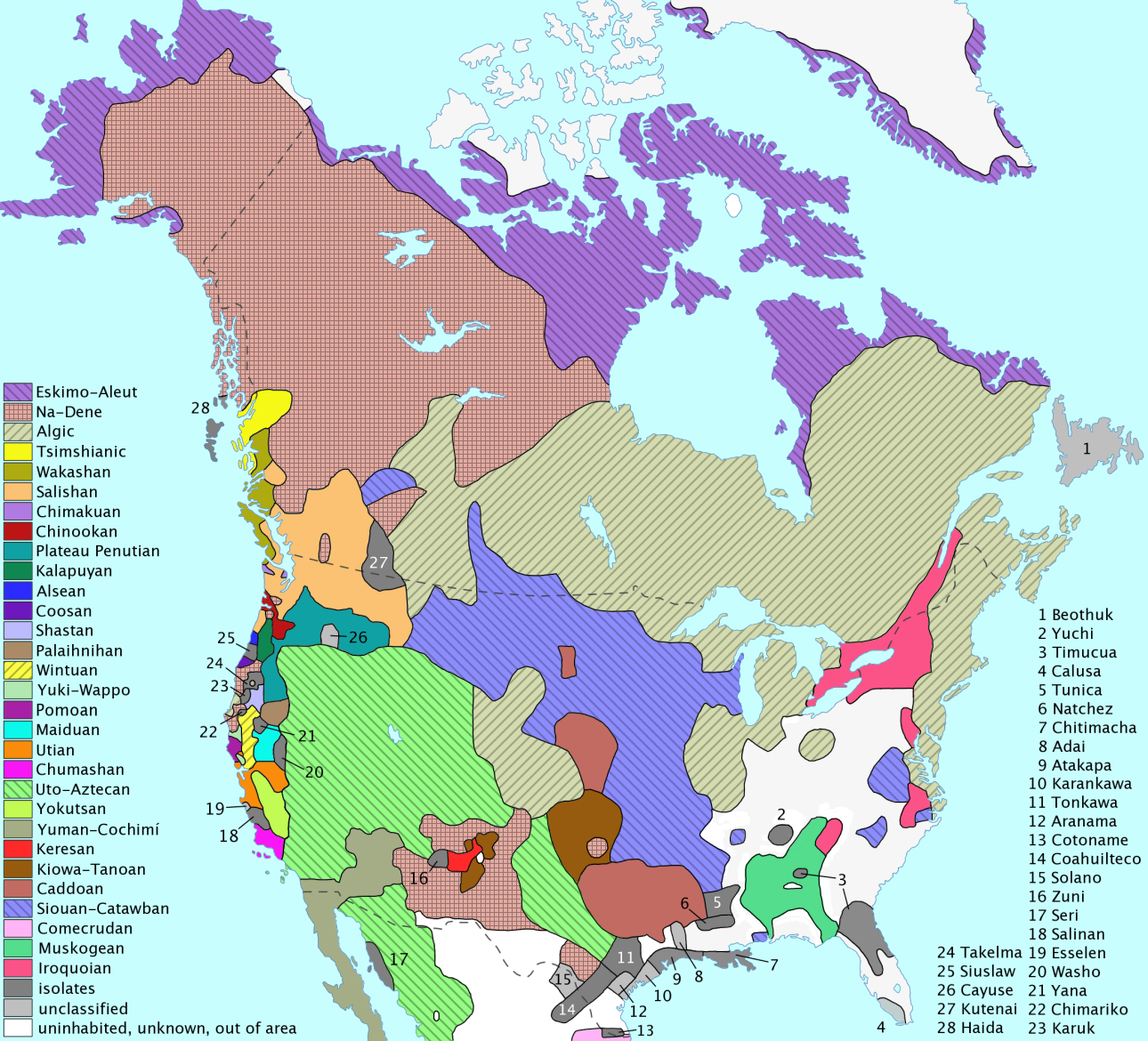|
I-69E (TX)
Interstate 69E (I-69E) is a north–south freeway running through South Texas. Once complete, the freeway will begin in Brownsville and head northward before terminating near Victoria as both I-69W and I-69E merge into I-69 toward Houston. For its entire length, I-69E runs concurrently with U.S. Highway 77 (US 77). The route currently exists in two segments: a segment from its southern terminus in Brownsville to the Willacy– Kenedy county line and a shorter segment south of Corpus Christi. The route has one auxiliary Interstate route, I-169 in Brownsville. History A stated goal of the Texas Department of Transportation's (TxDOT) I-69 initiative is that "existing suitable freeway sections of the proposed system be designated as I-69 as soon as possible". A bill was introduced and passed by the House of Representatives that allows Interstate quality sections of US 59, US 77, and US 281 to be signed as I-69 regardless of whether or not ... [...More Info...] [...Related Items...] OR: [Wikipedia] [Google] [Baidu] |
Brownsville, Texas
Brownsville () is a city in Cameron County in the U.S. state of Texas. It is on the western Gulf Coast in South Texas, adjacent to the border with Matamoros, Mexico. The city covers , and has a population of 186,738 as of the 2020 census. It is the 139th-largest city in the United States and 18th-largest in Texas. It is part of the Matamoros–Brownsville metropolitan area. The city is known for its year-round subtropical climate, deep-water seaport, and Hispanic culture. The city was founded in 1848 by American entrepreneur Charles Stillman after he developed a successful river-boat company nearby. It was named for Fort Brown, itself named after Major Jacob Brown, who fought and died while serving as a U.S. Army soldier during the Mexican–American War (1846–1848). As a county seat, the city and county governments are major employers. Other primary employers fall within the service, trade, and manufacturing industries, including a growing aerospace and space ... [...More Info...] [...Related Items...] OR: [Wikipedia] [Google] [Baidu] |
Interstate 69 In Texas
Interstate 69 (I-69) is an Interstate Highway that is in the process of being built in the US state of Texas. It is part of a longer I-69 extension known as the NAFTA superhighway, that, when completed, will connect Canada to Mexico. In Texas, it will connect Tenaha and I-69 in Louisiana at the Louisiana border through the eastern part of the state and along the Texas Gulf Coast to Victoria, where it will split into three branches: I-69E to Brownsville, I-69C to Pharr, and I-69W to Laredo. The first segment of I-69 in Texas was opened in 2011 near Corpus Christi. The American Association of State Highway and Transportation Officials (AASHTO) approved an additional of US 77 from Brownsville to the Willacy– Kenedy county line for designation as I-69, which was to be signed as I-69E upon concurrence from the Federal Highway Administration (FHWA). FHWA approval for this segment was announced on May 29, 2013. By March 2015, a section of US ... [...More Info...] [...Related Items...] OR: [Wikipedia] [Google] [Baidu] |
Rio Grande Valley (Texas)
The Lower Rio Grande Valley ( es, Valle del Río Grande), commonly known as the Rio Grande Valley or locally as the Valley or RGV, is a region spanning the border of Texas and Mexico located in a floodplain of the Rio Grande near its mouth. The region includes the southernmost tip of South Texas and a portion of northern Tamaulipas, Mexico. It consists of the Brownsville, Harlingen, Weslaco, Pharr, McAllen, Edinburg, Mission, San Juan, and Rio Grande City metropolitan areas in the United States and the Matamoros, Río Bravo, and Reynosa metropolitan areas in Mexico. The area is generally bilingual in English and Spanish, with a fair amount of Spanglish due to the region's diverse history and transborder agglomerations It is home to some of the poorest cities in the nation, as well as many unincorporated, persistent poverty communities called ''colonias''. A large seasonal influx occurs of "winter Texans" — people who come down from the north for the winter and th ... [...More Info...] [...Related Items...] OR: [Wikipedia] [Google] [Baidu] |
Texas State Highway 44
State Highway 44 (SH 44) is a Texas state highway that runs from west of Encinal to Corpus Christi, Texas. This highway is also known as the Cesar Chavez Memorial Highway outside the city limits of Robstown, Banquete, Agua Dulce, Alice, and Corpus Christi in Nueces and Jim Hogg counties. History SH 44 was originally proposed on April 24, 1919 as a connector route between Waco and Giddings. On July 16, 1923, the southern terminus extended south to LaGrange. By 1926, construction was continuing on the highway, and SH 44 was concurrent with U.S. Highway 77 (US 77). On July 15, 1935, SH 21 was rerouted concurrent with SH 44 from north of Giddings to Giddings. On November 24, 1936, this route had extended south to Hallettsville and another section from Victoria south via Sinton and Robstown to Alice was designated, creating a gap and replacing part of SH 72 and all of SH 128 (which was reassigned to the portion of SH 72 that was disc ... [...More Info...] [...Related Items...] OR: [Wikipedia] [Google] [Baidu] |
Interstate 37
Interstate 37 (I-37) is a Interstate Highway located within the southern portion of the US state of Texas. The highway was first designated in 1959 as a route between Corpus Christi and San Antonio. Construction in the urban areas of Corpus Christi and San Antonio began in the 1960s, and the segments of the Interstate Highway in rural areas were completed by the 1980s. Prior to I-37, the route between Corpus Christi and San Antonio was served by a combination of State Highway 9 (SH 9) from Corpus Christi to Three Rivers and U.S. Highway 281 (US 281) from Three Rivers to San Antonio. As a result of the construction of I-37, SH 9 was removed from the State Highway System. The highway begins in Corpus Christi at US 181 and SH 35 and heads north to San Antonio, where it ends at I-35. Beyond I-35, the freeway continues as US 281 to northern San Antonio as a major freeway. In Corpus Christi, the highway provides access to the down ... [...More Info...] [...Related Items...] OR: [Wikipedia] [Google] [Baidu] |
Interstate Highway Standards
Standards for Interstate Highways in the United States are defined by the American Association of State Highway and Transportation Officials (AASHTO) in the publication ''A Policy on Design Standards: Interstate System''. For a certain highway to be considered an Interstate Highway, it must meet these construction requirements or obtain a waiver from the Federal Highway Administration. Standards Standardization helps keep road design consistent, such that drivers can learn the consistent features and drive accordingly. Standardization can therefore decrease accidents and increase driver safety. These standards are, : * Controlled access: All access onto and off the highway is to be controlled with interchanges and grade separations, including all railroad crossings. Interchanges are to provide access to and from both directions of the highway and both directions of the crossroad. Interchanges should be spaced at least apart in urban areas and apart in rural areas; ... [...More Info...] [...Related Items...] OR: [Wikipedia] [Google] [Baidu] |
Greater Houston
Greater Houston, designated by the United States Office of Management and Budget as Houston–The Woodlands–Sugar Land, is the fifth-most populous metropolitan statistical area in the United States, encompassing nine counties along the Gulf Coast in Southeast Texas. With a population of 6,997,384 people at the 2018 census estimates and 7,122,240 in 2020, Greater Houston is the second-most populous in Texas after the Dallas–Fort Worth metroplex. The approximately region centers on Harris County, the third-most populous county in the U.S., which contains the city of Houston—the largest economic and cultural center of the South—with a population of more than 2.3 million. Greater Houston is part of the Texas Triangle megaregion along with the Dallas–Fort Worth metroplex, Greater Austin, and Greater San Antonio. Greater Houston also serves as a major anchor and economic hub for the Gulf Coast. Its Port of Houston is the second largest port in the United States, sixte ... [...More Info...] [...Related Items...] OR: [Wikipedia] [Google] [Baidu] |
American Association Of State Highway And Transportation Officials
The American Association of State Highway and Transportation Officials (AASHTO) is a standards setting body which publishes specifications, test protocols, and guidelines that are used in highway design and construction throughout the United States. Despite its name, the association represents not only highways but air, rail, water, and public transportation as well. Although AASHTO sets transportation standards and policy for the United States as a whole, AASHTO is not an agency of the federal government; rather it is an organization of the states themselves. Policies of AASHTO are not federal laws or policies, but rather are ways to coordinate state laws and policies in the field of transportation. Purpose The American Association of State Highway Officials (AASHO) was founded on December 12, 1914. Its name was changed to American Association of State Highway and Transportation Officials on November 13, 1973. The name change reflects a broadened scope to cover all modes ... [...More Info...] [...Related Items...] OR: [Wikipedia] [Google] [Baidu] |
Federal Highway Administration
The Federal Highway Administration (FHWA) is a division of the United States Department of Transportation that specializes in highway transportation. The agency's major activities are grouped into two programs, the Federal-aid Highway Program and the Federal Lands Highway Program. Its role had previously been performed by the Office of Road Inquiry, Office of Public Roads and the Bureau of Public Roads. History Background The organization has several predecessor organizations and complicated history. The Office of Road Inquiry (ORI) was founded in 1893. In 1905, that organization's name was changed to the Office of Public Roads (OPR) which became a division of the United States Department of Agriculture. The name was changed again to the Bureau of Public Roads in 1915 and to the Public Roads Administration (PRA) in 1939. It was then shifted to the Federal Works Agency which was abolished in 1949 when its name reverted to Bureau of Public Roads under the Department of Comm ... [...More Info...] [...Related Items...] OR: [Wikipedia] [Google] [Baidu] |
United States House Of Representatives
The United States House of Representatives, often referred to as the House of Representatives, the U.S. House, or simply the House, is the lower chamber of the United States Congress, with the Senate being the upper chamber. Together they comprise the national bicameral legislature of the United States. The House's composition was established by Article One of the United States Constitution. The House is composed of representatives who, pursuant to the Uniform Congressional District Act, sit in single member congressional districts allocated to each state on a basis of population as measured by the United States Census, with each district having one representative, provided that each state is entitled to at least one. Since its inception in 1789, all representatives have been directly elected, although universal suffrage did not come to effect until after the passage of the 19th Amendment and the Civil Rights Movement. Since 1913, the number of voting representat ... [...More Info...] [...Related Items...] OR: [Wikipedia] [Google] [Baidu] |
Texas Department Of Transportation
The Texas Department of Transportation (TxDOT ) is a government agency in the American state of Texas. Though the public face of the agency is generally associated with the construction and maintenance of the state's immense state highway system, the agency is also responsible for overseeing aviation, rail, and public transportation systems in the state. At one time, TxDOT also administered vehicle registration; but this function transferred to the Texas Department of Motor Vehicles, a state agency which began operations in November 2009. The agency has been headquartered in the Dewitt C. Greer Building at 125 East 11th Street in Downtown Austin, Texas, since 1933. History The Texas Legislature created the Texas Highway Department in 1916 to administer federal highway construction and maintenance. In 1975, its responsibilities increased when the agency merged with the Texas Mass Transportation Commission, resulting in the formation of the State Department of Highways an ... [...More Info...] [...Related Items...] OR: [Wikipedia] [Google] [Baidu] |
I-37 - US 77 Interchange , a highway in Texas, United States
*
{{Letter-NumberCombDisambig ...
I37 or I-37 may refer to: * Astrodomi Observatory, Tigre, Buenos Aires Province, Argentina * Interstate 37 Interstate 37 (I-37) is a Interstate Highway located within the southern portion of the US state of Texas. The highway was first designated in 1959 as a route between Corpus Christi and San Antonio. Construction in the urban areas of C ... [...More Info...] [...Related Items...] OR: [Wikipedia] [Google] [Baidu] |





